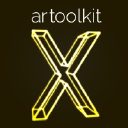5 Best Augmented Reality Development Tools [2024 Guide]
1. Vuforia
- Advanced AR development capabilities
- Easy integration with Unity and other platforms
- Scalable and reliable for business use

Discover Vuforia, a powerful augmented reality platform that enables businesses to create immersive AR experiences and drive customer engagement. With advanced features, seamless integration, and flexible pricing, Vuforia is the top choice for businesses seeking to harness the power of AR for growth and innovation.
2. Wikitude
- Powerful cross-platform AR development toolkit
- Extensive image tracking and cloud recognition capabilities
- Ability to create unparalleled AR experiences for engaging user interactions

Wikitude is a leading cross-platform AR development toolkit with extensive image tracking and cloud recognition capabilities. It offers powerful features to create unparalleled AR experiences for engaging user interactions. The pricing plans are comprehensive, catering to beginners and experienced AR developers alike.
3. ARKit
- Efficient management of parking spaces and access control
- Real-time reporting and analytics for better decision-making
- User-friendly interface for easy navigation and use

ARKit is a cutting-edge solution designed to streamline the management of parking spaces and access control, providing real-time reporting, user-friendly features, and flexible pricing plans. With a focus on efficiency and ease of use, ARKit is a valuable tool for businesses of all sizes.
4. ARCore
- Highly advanced and accurate AR tracking capabilities
- Seamless integration with Google's wide range of devices and capabilities
- Easy to use and developer-friendly SDK for creating AR experiences

Google ARCore offers highly advanced and accurate AR tracking capabilities, seamless integration with Google's wide range of devices and capabilities, and an easy-to-use and developer-friendly SDK for creating AR experiences. Its customizable pricing model caters to businesses of all sizes, and its robust features have received rave reviews from developers and businesses alike. With precise object tracking, environmental understanding, light estimation, and virtual object interaction, Google ARCore is a versatile and reliable choice for businesses looking to leverage augmented reality.
5. ARToolKit
- Advanced AR capabilities
- Robust 3D modeling and virtual reality support
- API integrations for seamless connectivity

ARToolKit is a powerful augmented reality tool that offers advanced AR capabilities, robust 3D modeling and virtual reality support, and seamless API integrations. Ideal for businesses looking to implement AR technology for various use cases.
FAQ
What are the key features to look for in an augmented reality development tool?
When considering augmented reality (AR) development tools, it's essential to focus on crucial features such as compatibility with multiple platforms, ease of integration with existing applications, reliable tracking and recognition capabilities, and comprehensive support for AR content creation.
How can augmented reality development tools enhance user engagement?
Augmented reality development tools provide immersive and interactive experiences that captivate users, leading to increased customer engagement. By leveraging advanced AR content creation features and seamless integration with real-world environments, these tools enable businesses to deliver compelling experiences that leave a lasting impression on users.
What role do augmented reality development tools play in creating scalable AR applications?
Augmented reality development tools are pivotal in enabling the creation of scalable AR applications by offering robust performance optimization capabilities, flexible deployment options, and efficient resource management. They empower developers to build AR solutions that can seamlessly adapt to varying user demands and evolving technological landscapes.
How do augmented reality development tools contribute to the evolution of user experiences?
Augmented reality development tools drive the evolution of user experiences by enabling the implementation of cutting-edge AR features, intuitive user interfaces, and real-time interaction capabilities. This results in the delivery of immersive, personalized, and context-aware experiences that significantly elevate user engagement and satisfaction.
What are the security considerations associated with using augmented reality development tools?
When utilizing augmented reality development tools, it's crucial to prioritize data privacy protection, secure data transmission, and robust authentication mechanisms to mitigate potential security risks. Additionally, adhering to industry best practices for AR application security and leveraging encryption technologies are imperative to safeguard user information and ensure a secure AR experience.

FAQ
When considering augmented reality (AR) development tools, it's essential to focus on crucial features such as compatibility with multiple platforms, ease of integration with existing applications, reliable tracking and recognition capabilities, and comprehensive support for AR content creation.
Augmented reality development tools provide immersive and interactive experiences that captivate users, leading to increased customer engagement. By leveraging advanced AR content creation features and seamless integration with real-world environments, these tools enable businesses to deliver compelling experiences that leave a lasting impression on users.
Augmented reality development tools are pivotal in enabling the creation of scalable AR applications by offering robust performance optimization capabilities, flexible deployment options, and efficient resource management. They empower developers to build AR solutions that can seamlessly adapt to varying user demands and evolving technological landscapes.
Augmented reality development tools drive the evolution of user experiences by enabling the implementation of cutting-edge AR features, intuitive user interfaces, and real-time interaction capabilities. This results in the delivery of immersive, personalized, and context-aware experiences that significantly elevate user engagement and satisfaction.
When utilizing augmented reality development tools, it's crucial to prioritize data privacy protection, secure data transmission, and robust authentication mechanisms to mitigate potential security risks. Additionally, adhering to industry best practices for AR application security and leveraging encryption technologies are imperative to safeguard user information and ensure a secure AR experience.